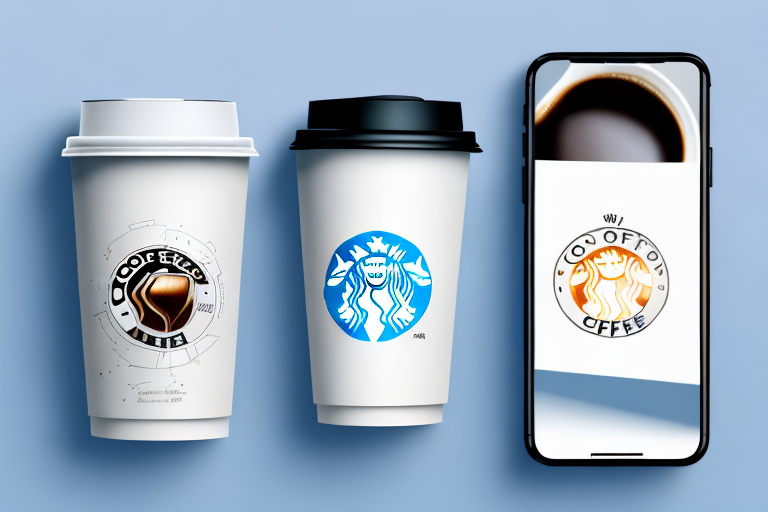Collaborative marketing is a powerful tool that can greatly benefit fashion brands. By teaming up with other brands, influencers, and utilizing social media, collaborative marketing can open up new opportunities for growth and brand exposure. In this article, we will explore the concept of collaborative marketing, its importance in the fashion industry, key elements of a successful strategy, and how to overcome common challenges.
Understanding Collaborative Marketing
The Concept of Collaborative Marketing
Collaborative marketing, also known as co-marketing, involves two or more brands joining forces to promote their products or services. By combining their resources, expertise, and customer bases, brands can tap into new markets and reach a wider audience. This form of marketing is particularly effective in the fashion industry, where partnerships and collaborations between brands are highly valued by consumers.
When brands engage in collaborative marketing, they are able to pool their resources and share the costs of marketing campaigns. This allows them to reach a larger audience without having to invest heavily in advertising and promotional activities. By working together, brands can also benefit from each other's expertise and knowledge, leading to more innovative and effective marketing strategies.
Collaborative marketing is not limited to just fashion brands partnering with each other. It can also involve collaborations between fashion brands and other industries, such as technology or entertainment. For example, a fashion brand may team up with a popular tech company to create a limited edition product that combines fashion and technology. This type of collaboration not only attracts the attention of fashion enthusiasts but also tech-savvy consumers, expanding the reach of both brands.
Importance of Collaborative Marketing in Fashion
In the competitive world of fashion, collaborative marketing plays a crucial role in building brand awareness and driving sales. By partnering with other fashion brands, a brand can leverage each other's strengths and access new customer segments. Additionally, collaborative marketing allows brands to tap into the influence of popular fashion influencers and reach a larger audience than they could on their own.
One of the main reasons why collaborative marketing is important in the fashion industry is because it allows brands to differentiate themselves from their competitors. By teaming up with another brand, they can create unique and exclusive products or collections that stand out in the market. This not only attracts the attention of consumers but also generates buzz and excitement, leading to increased brand visibility and sales.
Collaborative marketing also provides fashion brands with the opportunity to tap into new markets and customer segments. By partnering with a brand that has a different target audience or market presence, they can expand their reach and attract new customers who may not have been aware of their brand before. This allows them to grow their customer base and increase their market share.
Furthermore, collaborative marketing in the fashion industry allows brands to tap into the influence and reach of popular fashion influencers. By partnering with influencers who have a large following and a strong presence on social media, brands can leverage their influence to promote their products and reach a wider audience. This type of collaboration not only helps in increasing brand awareness but also builds credibility and trust among consumers.
In conclusion, collaborative marketing is a powerful strategy that can benefit brands in the fashion industry. By joining forces with other brands, they can tap into new markets, access new customer segments, and leverage each other's strengths and resources. Collaborative marketing not only helps in building brand awareness but also drives sales and creates unique and exciting opportunities for brands to stand out in the competitive fashion market.
Key Elements of Collaborative Marketing in Fashion
Collaborative marketing in the fashion industry involves various strategies and tactics that aim to create mutually beneficial partnerships and campaigns. By working together, brands can leverage each other's strengths and resources to reach a wider audience and achieve shared marketing goals. Let's explore some key elements of collaborative marketing in fashion.
Brand Partnerships
One key element of successful collaborative marketing in fashion is brand partnerships. When selecting brand partners, it's important to choose brands that align with your values, target audience, and overall brand image. By partnering with complementary brands, you can create synergistic campaigns that benefit both parties and resonate with your shared target audience.
For example, a sustainable fashion brand may collaborate with an eco-friendly beauty brand to promote the idea of conscious consumerism. By joining forces, these brands can amplify their message and encourage consumers to make more ethical choices in their fashion and beauty purchases.
Influencer Collaborations
Influencer collaborations have become an integral part of collaborative marketing in the fashion industry. By partnering with influential individuals in the fashion space, brands can leverage their social media reach and credibility to promote their products. When selecting influencers to collaborate with, it's important to consider their relevance to your target audience and the alignment between their personal brand and your brand values.
For instance, a luxury fashion brand may collaborate with a well-known fashion blogger who embodies their brand's aesthetic and values. Through sponsored posts, product reviews, and exclusive content, the influencer can help create brand awareness and drive sales for the fashion brand.
Social Media Campaigns
Social media is a powerful tool for collaborative marketing in the fashion industry. Brands can create joint social media campaigns that generate buzz, increase brand visibility, and drive engagement. Whether it's through Instagram takeovers, co-created content, or hashtag campaigns, social media allows brands to amplify their message and connect with a broader audience.
For example, two fashion brands may collaborate on a social media campaign centered around a specific theme or cause. By sharing content, tagging each other, and encouraging user-generated content with a branded hashtag, these brands can create a sense of community and excitement among their followers. This not only increases brand exposure but also fosters a sense of authenticity and trust.
In conclusion, collaborative marketing in the fashion industry involves brand partnerships, influencer collaborations, and social media campaigns. By leveraging these key elements, fashion brands can expand their reach, engage with their target audience, and create meaningful connections that drive business growth.
Developing a Successful Collaborative Marketing Strategy
Collaborative marketing has become an increasingly popular approach for brands looking to expand their reach and connect with new audiences. By joining forces with like-minded partners, businesses can leverage each other's strengths and create a powerful marketing strategy that benefits all parties involved.
Identifying the Right Partners
When developing a collaborative marketing strategy, it's essential to identify the right partners. Look for brands or influencers that share your target audience but offer complementary products or services. By teaming up with the right partners, you can create a unified and powerful message that resonates with your customer base.
For example, if you're a fitness apparel brand targeting health-conscious individuals, partnering with a popular fitness influencer or a nutrition supplement company can be a great way to expand your reach and tap into a new customer segment. By aligning your brand with partners that share similar values and cater to the same audience, you can create a collaborative marketing campaign that is both authentic and effective.
Creating a Collaborative Campaign
Once you've identified the right partners, it's time to create a collaborative campaign. This involves brainstorming ideas, defining objectives, and determining each partner's role and contribution. Effective communication and coordination are key to ensure that the campaign aligns with the brand's values and resonates with the target audience.
During the campaign creation process, it's important to consider the unique strengths and expertise of each partner. By leveraging the individual strengths of each brand or influencer, you can create a campaign that is greater than the sum of its parts. This could involve creating engaging content, hosting joint events or webinars, or even launching co-branded products or services.
For instance, a collaboration between a fashion brand and a popular travel blogger could result in a campaign where the blogger showcases the brand's clothing in stunning travel destinations. This not only promotes the fashion brand but also provides valuable travel inspiration to the blogger's audience, creating a win-win situation for both parties.
Measuring the Success of Your Strategy
After implementing a collaborative marketing strategy, it's important to measure its success. Determine key performance indicators (KPIs) such as brand reach, website traffic, social media engagement, and sales. Regularly track and analyze these metrics to assess the impact of your collaborative marketing efforts and make data-driven decisions for future campaigns.
By measuring the success of your collaborative marketing strategy, you can identify what worked well and what areas need improvement. This valuable insight allows you to refine your approach and optimize future campaigns for even greater success.
Additionally, it's important to maintain open communication with your partners throughout the campaign and share the results with them. This not only fosters transparency but also allows all parties to learn from the experience and make adjustments as needed.
In conclusion, developing a successful collaborative marketing strategy involves identifying the right partners, creating a collaborative campaign that leverages each partner's strengths, and measuring the success of the strategy through key performance indicators. By following these steps and continuously refining your approach, you can unlock the full potential of collaborative marketing and achieve remarkable results for your brand.
Overcoming Challenges in Collaborative Marketing
Navigating Brand Compatibility Issues
One challenge in collaborative marketing is ensuring brand compatibility between partners. It's important to carefully evaluate each brand's values, aesthetics, and target audience to ensure that they align with your own brand. Open and transparent communication between partners is key to avoid any conflicts and create a cohesive campaign that reflects the essence of each brand.
Managing Collaborative Marketing Costs
Collaborative marketing can be costly, especially when partnering with well-established brands or influencers. It's essential to set a clear budget and establish expectations regarding financial contributions from each partner. Exploring creative cost-sharing strategies and leveraging shared resources can help maximize the benefits of collaborative marketing while minimizing financial strain.
Ensuring Authenticity in Collaborations
Authenticity is crucial in collaborative marketing. Collaborations should be genuine and aligned with the values and aesthetic of each brand involved. Authenticity builds trust with consumers and enhances the overall impact of collaborative marketing efforts. Brands should prioritize maintaining their unique identities while finding common ground with their collaborative partners.
In conclusion, collaborative marketing is an effective strategy for fashion brands to expand their reach and engage with a larger audience. By understanding the concept of collaborative marketing, leveraging key elements such as brand partnerships, influencer collaborations, and social media campaigns, and overcoming challenges through careful planning and authenticity, fashion brands can discover the best collaborative marketing strategies that will drive their success in a highly competitive industry.
Collab with brands and creators. Request your invite at collabs.io



